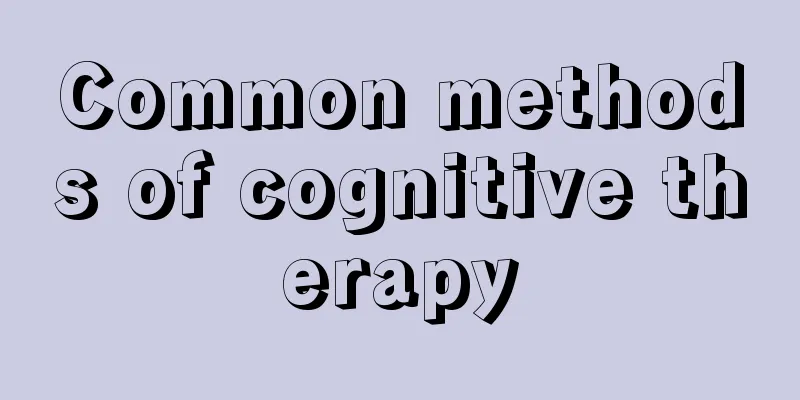Common methods of cognitive therapy

|
Many people feel very insecure about themselves. In fact, this is not a personality problem, but a disease. This disease is usually treated with cognitive therapy. Cognitive therapy is a method in which doctors guide patients mentally, allowing them to affirm themselves step by step. Slowly, the patients will become more confident. In the treatment process of cognitive therapy, doctors will use many methods, so what are the commonly used methods? Developed on the basis of cognitive theory, clients correct their original wrong thoughts and ideas about people, things, and themselves through re-education methods such as explanation and guidance from counselors, and rebuild their cognitive structure to achieve the effect of "realizing that today is right and yesterday is wrong." It is somewhat similar to our country's traditional ideological and political education. The main techniques include: cognitive-perceptual therapy and rational-emotive therapy. The task of cognitive therapy is to discover and modify cognitive biases. How to revise it? That is to question, inquire and debate, which is a major feature of cognitive therapy. Unfortunately, most people misunderstand the meaning of "debate", thinking that it means pointing out the cognitive errors of the person seeking help, refuting them one by one, and at the same time explaining the correct viewpoint to him with reason and evidence so that he is convinced. Build motivation for help In this process, it is important to recognize maladaptive cognitive-emotional-behavioral patterns. The patient and the therapist reach a consensus on the cognitive interpretation of their problem; explain the adverse symptoms and estimate the expected results that can be achieved by correction. For example, patients can self-monitor their thoughts, emotions, and behaviors, and therapists can provide guidance, instructions, and cognitive demonstrations. Adaptive cognitive correction In this process, patients are required to develop new cognitions and behaviors to replace maladaptive cognitions and behaviors. For example, therapists guide patients to apply new cognitions and behaviors extensively. Dealing with everyday problems Cultivate competition of ideas and use new cognition to confront existing cognition. During this process, patients should practice applying new cognitive models to social situations to replace the original cognitive models. For example, patients can first practice solving problems using their imagination or simulate certain situations, or they can be trained with actual experiences under certain conditions. |
>>: What does cerebral palsy look like
Recommend
Experts analyze common methods of treating liver cancer for you
Among the common liver diseases, liver cancer is ...
Thyroid cancer patients cannot do physical training
Thyroid cancer is a malignant tumor originating f...
How to wash oil stains on clothes
Many friends know that if oil stains are accident...
How to deal with tattoo inflammation
Seeing other people's beautiful tattoos, ever...
What is the reason for stomach pain after drinking soy milk
Many people think that soy milk is a health drink...
What to do if there are multiple nodules in the lungs
Patients should not worry too much when multiple ...
Several methods to treat foot odor
When winter comes, people will wear thick socks, ...
Detailed introduction to the five major symptoms of esophageal cancer
In recent years, esophageal cancer has become a m...
How to relieve physical fatigue?
The feeling of fatigue is a state that people exp...
What medicine is good for worm bites
With the arrival of summer, a large number of mos...
Sometimes I feel a warm current behind my heels
The foot is a very important part of the human bo...
How long can one live with advanced lung cancer? How to improve the survival rate through comprehensive treatment
How long you can live with advanced lung cancer d...
What to do if pistachios become damp again? Don't eat it if it's moldy
Pistachios have extremely high nutritional value,...
How to take stool in a routine bowel movement
If there is a problem with the human body, certai...
Can stomach cancer heal itself? No, it cannot heal itself
Gastric cancer cannot heal itself and requires ti...









